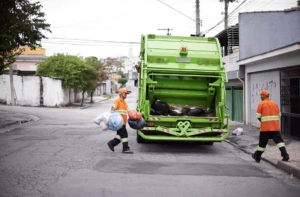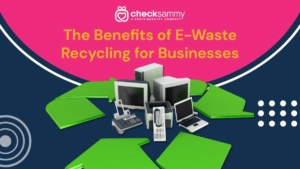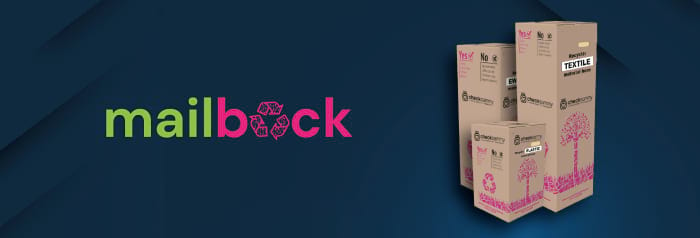How to Minimize Your Carbon Footprint with Junk Removal and Recycling
Reducing your company’s carbon footprint offers numerous benefits to your business, from improving your brand image and reputation, to increasing cost savings, and ensuring regulatory compliance. One effective way to achieve this goal is by incorporating carbon offsets into your waste management strategies, specifically focusing on junk removal and recycling. Today, we’re digging into the concept of carbon offsets, their role in minimizing carbon footprints, and how junk removal and recycling can help your businesses make a positive impact on the environment.
The Role of Carbon Offsets in Reducing Corporate Carbon Footprints
Carbon offsets are measurable, quantifiable reductions in greenhouse gas (GHG) emissions that are achieved by investing in projects that help remove or prevent emissions. The idea is simple: if a company can’t reduce its own emissions, it can compensate for them by contributing to projects that reduce emissions elsewhere. The offset credits generated by these projects can be purchased or traded on carbon offset marketplaces like CheckSammy’s.
Carbon offsets offer various advantages for businesses, including:
- Regulatory compliance: With governments around the world implementing stricter regulations on GHG emissions, your business may be required to offset a portion of your emissions to meet stricter compliance standards.
- Environmental stewardship: By investing in carbon offsets, your organization can demonstrate a commitment to sustainability, helping improve brand reputation and customer loyalty.
- Cost savings: Companies that purchase carbon offsets may be eligible for certain tax incentives offered by the government. Additionally, if you’re able to cut energy usage to reduce carbon emissions, your business can also save on energy costs.
- Competitive advantage: Early adopters of carbon offset strategies can position themselves as industry leaders, attracting investors and customers who prioritize environmental responsibility.
There is a wide range of carbon offset projects available for investment, catering to various budgets and preferences, from renewable energy projects to reforestation initiatives and methane capture and destruction projects – to name a few. A complementary way to reduce your carbon footprint is through sustainable junk removal and recycling.
Using Junk Removal and Recycling to Reduce your Carbon Footprint
Junk removal and recycling as sustainable business practices can help considerably reduce your business’s carbon emissions in several ways:
- Lower emissions from landfills: By diverting waste from landfills, recycling reduces the release of methane, a potent greenhouse gas generated during the decomposition of organic materials. If your business implements a recycling program and is able to divert a certain percentage of waste away from landfills, that delivers a concrete reduction in emissions.
- Reduced energy usage in manufacturing: Recycling materials often requires less energy than manufacturing products from raw materials, thereby lowering emissions from industrial processes. Whether you’re recycling byproducts from your own manufacturing facility, or sending used items to recycling vendors, they both have a positive impact.
- Conservation of resources: Recycling reduces the need for extracting and processing raw materials, which helps conserve natural resources and reduces energy consumption in the process.
Implementing a comprehensive, sustainable junk removal and recycling program can be beneficial for both your business interests and the environment. Let’s look at some best practices for getting started.
Best Practices for Junk Removal and Recycling
Starting a junk removal and recycling program doesn’t have to be time consuming or resource intensive when your business has the right partner. CheckSammy has years of experience developing custom junk removal and recycling initiatives for organizations in a wide range of industries, and can walk you through all the steps. Let’s look at some best practices we typically follow to help ensure the success of a junk removal and recycling program.
1 – Conduct a Waste Audit
Gain a better understanding of your organization’s current waste situation with a waste audit. We analyze your business’ waste streams to identify the types and volumes of waste generated, as well as opportunities for recycling and waste reduction.
2 – Develop a Waste Management Plan
You likely already have some sort of waste management plan or process in place, but we often find that businesses rely heavily on traditional waste management vendors that send most waste to the landfill. We work with you to establish a comprehensive plan that outlines waste reduction, recycling, and disposal goals, as well as the steps required to achieve them. This typically involves a dedicated recycling program using smart recycling receptacles to encourage employees to reduce the volume of items they throw in waste bins.
3 – Implement Recycling Infrastructure
A recycling program starts with providing clearly labeled recycling bins and containers in accessible locations, and then ensuring that employees are aware of the proper disposal methods for various materials. With CheckSammy’s smart recycling bins, sensors monitor their fill level, and we’ll automatically come out to pick up bins that are close to being full – so you don’t have to worry about manually coordinating pick-ups.
4 – Engage Employees
The success of a recycling program hinges on your team’s buy-in. We will help you educate and encourage employees to participate in the recycling program through training, communication, and incentives.
5 – Monitor and Evaluate Progress
Gauging the success of your new initiative rests on having concrete data to compare. With CheckSammy, you receive verifiable, unalterable track-and-trace data for every item we haul away, with volume, weights, and diversion information so you can see where your items end up. With this data, you can regularly assess the effectiveness of your new waste management plan, and make adjustments as needed to improve recycling rates and reduce waste generation.
As you start to gather more data, you can also evaluate your carbon emissions and determine the impact of your junk removal and recycling practices on reducing emissions. These sustainable waste management practices, coupled with supporting carbon offset projects, will go a long way towards reducing your company’s carbon footprint.
Start Offsetting your Carbon Emissions Today
Sustainable junk removal and recycling can substantially reduce your business’s environmental impact by conserving resources, lowering emissions from landfills, and decreasing energy usage in manufacturing. Combining these practices with carbon offset investments further amplifies their positive impact on the environment and demonstrates your company’s commitment to sustainability.
If you’d like to discuss implementing a junk removal and recycling program for your business, contact us today.
See Our Services
Create a custom solution to meet your waste and sustainability goals. Contact us today!
Continue reading
Dive deeper into the CheckSammy Blog by reading one of our posts below
Feeling the Pain of Higher Resident Turnover? Apartment Junk Removal Can Help
If you’re a property manager, you’ve probably had a significant increase in tenant turnover over the last couple of years. So it’s no wonder apartment junk removal may be top of mind for you right now. There are several reasons for this shift. For one, the housing market is on fire right now. In 2020 […]
Read More About Feeling the Pain of Higher Resident Turnover? Apartment Junk Removal Can HelpSetting Up a Community E-waste Recycling Program
E-waste is the fastest-growing municipal waste stream according to the EPA, yet e-waste recycling isn’t keeping pace. In fact, only 12.5% of all e-waste is recycled, reports the EPA. Starting a community e-waste recycling program is a terrific way to ensure hazardous e-waste, like lithium-ion batteries, doesn’t end up in your community’s landfill. Creating an […]
Read More About Setting Up a Community E-waste Recycling ProgramWaste Management’s Role in the Circular Economy
Establishing a waste management program for your business or community is one of the best ways you can contribute to the circular economy. Here’s everything you need to know about waste management’s role in the circular economy (and how to get involved). What Is the Circular Economy? Our current economic model is all about taking […]
Read More About Waste Management’s Role in the Circular Economy5 Reasons to Consider a Textile Recycling Program for Your Organization
Americans sent more than 17 million tons of textiles to landfills in 2018, a volume that is only increasing every year, reports the Environmental Protection Agency. When you think about the fact that it can take over 200 years for textiles to decompose, it’s easy to grasp how large textile waste’s contribution is to the […]
Read More About 5 Reasons to Consider a Textile Recycling Program for Your Organization8 Benefits of Environmentally Friendly Power Washing Services
If you’re into maintaining the curb appeal of your business or home, then you’ve probably heard of pressure washing. Pressure cleaning involves using high-pressure water spray to remove grime, mold, dust, paint, mud, and other junk from objects or surfaces. Many people worry that pressure washing isn’t good for the environment, but this couldn’t be […]
Read More About 8 Benefits of Environmentally Friendly Power Washing ServicesWhy Our Customers Love Our Full-Service Junk Removal
If you’re looking for full-service junk removal services, you’ve come to the right place. CheckSammy is a one-stop shop for all your junk removal and sustainability needs. From our affordability, simplicity, and unrivaled turnaround times to our innovative sustainability solutions and patented technology and data, it’s clear why some of North America’s biggest companies choose […]
Read More About Why Our Customers Love Our Full-Service Junk RemovalTips for a Stress-Free Move From An Eco-Friendly Junk Removal Company
What does an eco-friendly junk removal company know about moving? Quite a lot, actually. Moving can be an especially chaotic time. You have to pack everything up, get rid of unwanted items, clean your property, load everything up, and move your things to your new location. That doesn’t even include the unpacking and resettling period. […]
Read More About Tips for a Stress-Free Move From An Eco-Friendly Junk Removal CompanyCollege Junk Removal Tips for Student Move-In Day
As the new school year gears up, colleges across the country are looking for ways to clean up their campuses before the new year begins, and many of them want to do so sustainably. College junk removal isn’t easy, though, especially around move-in week—and when trying to do so sustainably. As students move in and […]
Read More About College Junk Removal Tips for Student Move-In Day8 Items Hospitality Businesses May Not Know They Can Recycle
One hotel guest produces 2.5 pounds of trash every single day. Just a single hotel room produces around one cubic yard of waste each month, which totals 200 gallons of waste per room every month. Most of this waste goes straight to the landfill, even though research shows that up to 60% of it is […]
Read More About 8 Items Hospitality Businesses May Not Know They Can Recycle












